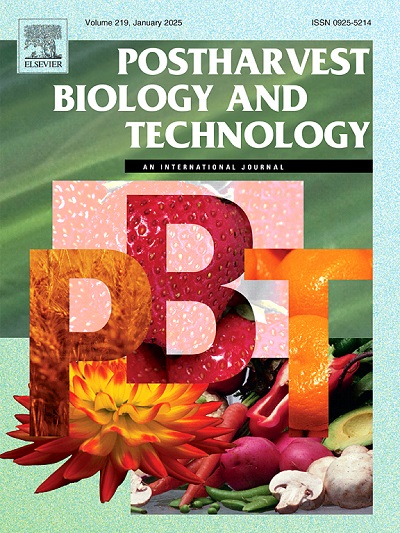How do plums ripen in two weather different years? A deep insight into the metabolomic profile
IF 6.4
1区 农林科学
Q1 AGRONOMY
引用次数: 0
Abstract
The aim of this study was to analyse the ripening process of two European plum cultivars, ‘Nada’ and ‘Stanley’. As the effects of climate change are becoming increasingly evident, plum producers are facing new challenges. Therefore, the study was conducted in two consecutive years (2021 and 2022) characterised by different weather conditions during the ripening of the plum fruit. The first harvest was performed when 70 % of the fruit surface was covered with cultivar characteristic colour, while the last sampling date coincided with fruit drop. In addition to the basic fruit quality parameters (fruit weight, firmness, total soluble solids), 35 primary and secondary metabolites (sugars, organic acids and phenolics) were identified and quantified by HPLC analysis. Certain trends such as the decrease in fruit firmness, the accumulation of sucrose and anthocyanins and the degradation of malate, were observed during the ripening of two cultivars studied. No clear trend was observed for hydroxycinnamic acids, flavonols, flavanols and flavanones, although the most dominant phenolic compound in all ripening stages was 3-caffeoylquinic acid. Principal component analysis showed that ripening was largely cultivar-dependent and that the behaviour of the same cultivar differed between growing seasons. It was found that heat waves in combination with drought periods accelerated the ripening process, which had a particular effect on the softening rate.
求助全文
约1分钟内获得全文
求助全文
来源期刊

Postharvest Biology and Technology
农林科学-农艺学
CiteScore
12.00
自引率
11.40%
发文量
309
审稿时长
38 days
期刊介绍:
The journal is devoted exclusively to the publication of original papers, review articles and frontiers articles on biological and technological postharvest research. This includes the areas of postharvest storage, treatments and underpinning mechanisms, quality evaluation, packaging, handling and distribution of fresh horticultural crops including fruit, vegetables, flowers and nuts, but excluding grains, seeds and forages.
Papers reporting novel insights from fundamental and interdisciplinary research will be particularly encouraged. These disciplines include systems biology, bioinformatics, entomology, plant physiology, plant pathology, (bio)chemistry, engineering, modelling, and technologies for nondestructive testing.
Manuscripts on fresh food crops that will be further processed after postharvest storage, or on food processes beyond refrigeration, packaging and minimal processing will not be considered.
 求助内容:
求助内容: 应助结果提醒方式:
应助结果提醒方式:


